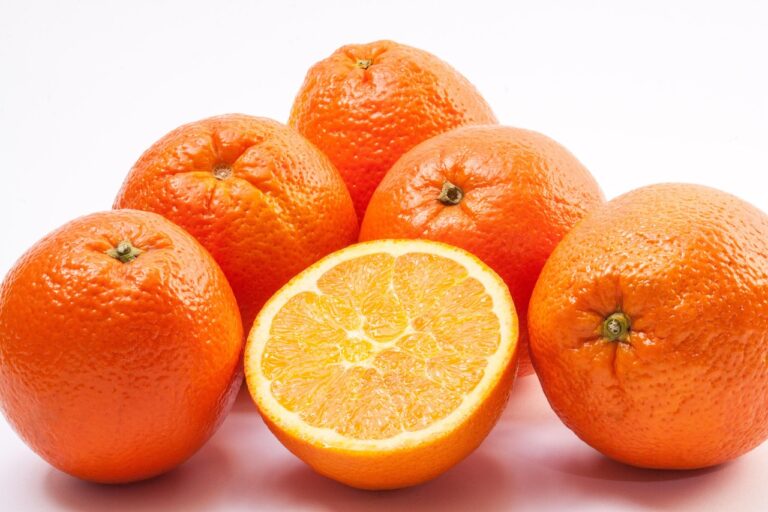How to Keep Bananas Fresh: 7 Proven Methods to Extend Shelf Life
Table of Contents
Keep Bananas Fresh
Are you tired of bananas turning brown before you can enjoy them? Do you find yourself throwing away mushy bananas every week? You’re not alone. The average American household wastes approximately 30% of the fresh produce they purchase, with bananas being among the most commonly discarded fruits.
Proper banana storage isn’t just about saving money—it’s about reducing food waste and ensuring you always have perfectly ripe fruit on hand. This guide will provide you with comprehensive and proven methods for keeping your bananas fresh longer.
Understanding Banana Ripening
The Science Behind It
Bananas release a natural plant hormone called ethylene gas as they ripen. This gas acts as a ripening agent, triggering the conversion of starch to sugar. The more ethylene present, the faster your bananas will ripen and eventually spoil. Understanding this process is key to finding the best way to store bananas and extend their freshness.
Factors Affecting Ripening
Several environmental factors influence how quickly your bananas ripen:
- Temperature: Warmer environments accelerate ripening, while cooler temperatures slow it down.
- Humidity: Higher humidity levels can lead to faster ripening and potential mold growth.
- Proximity to other fruits: Many fruits also produce ethylene gas, creating a ripening chain reaction when stored together.
7 Effective Methods for Storing Whole Bananas
Method 1: Separating Bananas
One of the simplest ways to store bananas and extend their freshness is to separate them from the bunch. When bananas are kept together, the ethylene gas produced by each fruit concentrates, causing the entire bunch to ripen faster.
By separating bananas, you allow each fruit to ripen at its own pace. This simple step can add 1-2 days of freshness to your bananas.
Method 2: Wrapping the Banana Stem
The stem of a banana bunch (also called the crown) is where most of the ethylene gas is released. By wrapping the stem with plastic wrap, aluminum foil, or even tape, you can significantly slow down the ripening process.
For the best results:
- Separate the bananas from the bunch
- Wrap each stem individually with plastic wrap
- Check that the wrap creates a tight seal around the stem
This method can extend banana freshness by 3-5 days, making it one of the most effective ways to keep bananas from ripening too quickly.
Method 3: Using a Banana Hanger
Banana hangers aren’t just decorative kitchen gadgets—they serve a practical purpose. By hanging bananas:
- You prevent bruising that occurs when bananas sit on countertops
- You improve air circulation around the fruit
- You reduce ethylene gas concentration around the bananas
Banana hangers come in various designs, from simple hooks to decorative stands. This storage method is particularly effective when combined with stem wrapping.
Method 4: Storing Bananas Away from Other Fruits
Because many fruits produce ethylene gas, keeping your bananas away from these “ripening neighbors” is crucial for extended freshness. The worst culprits include:
- Apples
- Avocados
- Peaches
- Tomatoes
- Pears
By designating a separate storage area for your bananas, away from your fruit bowl, you can significantly slow down the ripening process.
Method 5: The Refrigerator (Yes, Really!)
Contrary to popular belief, refrigerating bananas can be an excellent way to store bananas and preserve their freshness—with a catch. While refrigeration will turn the peels black or brown, the fruit inside remains perfectly edible and fresh.
The key is timing: refrigerate bananas once they’ve reached your preferred ripeness level. The cold temperature will dramatically slow down the ripening process, extending their usable life by up to a week.
For the best results, place bananas in the crisper drawer, away from other produce.
Method 6: Ethylene Gas Absorbers
For those serious about banana preservation, commercial ethylene gas absorbers can be a worthwhile investment. These products work by absorbing the ethylene gas that bananas release, significantly slowing down the ripening process.
Options include:
- Bluapple Produce Freshness Savers
- ExtraLife Produce Preserver
- Ethylene gas-absorbing bags
While these products cost money upfront, they can save you significantly more by reducing food waste in the long run.
Method 7: Controlled Atmosphere Storage (Advanced)
Commercial banana distributors use specialized controlled atmosphere storage to keep bananas fresh during shipping and storage. While not practical for home use, understanding this process shows just how precisely banana ripening can be controlled when environmental factors are carefully managed.
How to Store Cut or Sliced Bananas
The Challenge
Once cut or sliced, bananas brown much more quickly due to an enzyme called polyphenol oxidase reacting with oxygen. This reaction causes the familiar browning effect that makes sliced bananas less appetizing.
Solutions for Storing Sliced Bananas
Lemon Juice
Brushing sliced bananas with lemon juice provides an acidic coating that prevents oxidation. The citric acid acts as an antioxidant, slowing down the browning process without significantly altering the taste.
Ascorbic Acid (Vitamin C)
Crushed vitamin C tablets dissolved in water work similarly to lemon juice but without adding a citrus flavor. This solution creates a protective layer against oxygen exposure.
Honey Coating
A light coating of honey can create a natural barrier against oxygen while adding a pleasant sweetness. Simply brush thinly diluted honey over sliced bananas.
Air-Tight Containers
Minimizing oxygen exposure is crucial for sliced bananas. Store them in containers with tight-fitting lids, removing as much air as possible before sealing.
Vacuum Sealing
For those with vacuum sealers, this method provides the most effective oxygen barrier, keeping sliced bananas fresh for significantly longer periods.
Freezing Bananas for Later Use
Why Freeze Bananas?
Freezing is arguably the best way to store bananas for long-term preservation. Frozen bananas are perfect for:
- Smoothies
- Baking projects
- Healthy dessert alternatives
- Reducing food waste
Step-by-Step Freezing Guide
- Choose the right ripeness: Freeze bananas when they’re spotted but not overly brown for the best flavor.
- Peel before freezing: Always remove the peel, as frozen peels are nearly impossible to remove.
- Pre-freeze on a baking sheet: Lay sliced bananas on a parchment-lined baking sheet and freeze for 2 hours to prevent clumping.
- Transfer to storage containers: Move the pre-frozen banana pieces to freezer bags or containers, removing as much air as possible.
- Label and date: Frozen bananas maintain best quality for about 3 months.
Tips for Using Frozen Bananas
- For smoothies, use frozen bananas directly from the freezer
- For baking, thaw bananas in the refrigerator overnight
- For “nice cream,” blend frozen banana chunks until smooth and creamy
What to Do with Overripe Bananas
When bananas become too ripe for direct consumption, they’re actually at their sweetest and most flavorful for cooking and baking. Try these delicious options:
Banana Bread
The classic solution for overripe bananas—the browner the better! The high sugar content creates moist, flavorful bread.
Smoothies
Overripe bananas add natural sweetness and creaminess to smoothies, eliminating the need for added sugars.
“Nice Cream”
Blend frozen overripe bananas into a creamy, ice-cream-like dessert that’s both healthy and delicious. Add cocoa powder, peanut butter, or berries for flavor variations.
Banana Pancakes
Mash overripe bananas into pancake batter for naturally sweet, moist pancakes that require less added sugar.
Banana Face Mask
Beyond eating, overripe bananas make excellent natural skin moisturizers. Mash with honey and apply to your face for 15 minutes for a hydrating treatment.
Creative Uses for Banana Peels
Don’t throw those peels away! They have several practical uses:
Plant Fertilizer
Banana peels are rich in potassium and phosphorus, making them excellent natural fertilizers. Simply bury chopped peels near plant roots or create a “banana peel tea” by soaking peels in water for 48 hours.
Teeth Whitening
Some people claim that rubbing the inside of a banana peel on teeth for two minutes helps with whitening. While scientific evidence is limited, the minerals in the peel may help remove surface stains. (Always consult your dentist before trying natural whitening methods.)
Leather Polish
The natural oils and potassium in banana peels can add shine to leather shoes and furniture. Simply rub the inside of the peel on leather and buff with a soft cloth.
Debunking Banana Storage Myths
Myth: Never refrigerate bananas
Reality: While refrigeration turns peels black, the fruit inside remains perfectly edible. Refrigeration is actually one of the best ways to store bananas once they reach your preferred ripeness.
Myth: Bananas should always be stored in fruit bowls
Reality: Fruit bowls concentrate ethylene gas from various fruits, actually accelerating ripening. Storing bananas separately often keeps them fresh longer.
Myth: Green bananas are unripe and inedible
Reality: Green bananas are simply less sweet and contain resistant starch that can benefit gut health. They’re perfectly safe to eat and preferred by many people.
Troubleshooting Common Banana Problems
“My bananas are still ripening too fast!”
If you’ve tried the methods above and still struggle with rapid ripening, consider:
- Checking your home’s temperature (keep it below 70°F if possible)
- Ensuring bananas aren’t stored near heating vents or in direct sunlight
- Purchasing bananas at various ripeness stages to stagger consumption
“My bananas turned black in the fridge!”
This is completely normal and doesn’t indicate spoilage. The cold temperatures affect the peel color but not the fruit inside. The banana is still perfectly safe and delicious to eat.
Conclusion
With these proven methods for keeping bananas fresh, you can significantly reduce food waste and ensure you always have perfectly ripe fruit on hand. From simple techniques like stem wrapping to more advanced methods like controlled storage, there’s a banana preservation strategy to fit every lifestyle.
Remember that the best way to store bananas depends on when you plan to eat them. For immediate consumption, countertop storage with stem wrapping works well. For longer preservation, refrigeration or freezing is ideal.
What are your favorite tips for keeping bananas fresh? Have you tried any of these methods with success? Share your experiences in the comments below!


